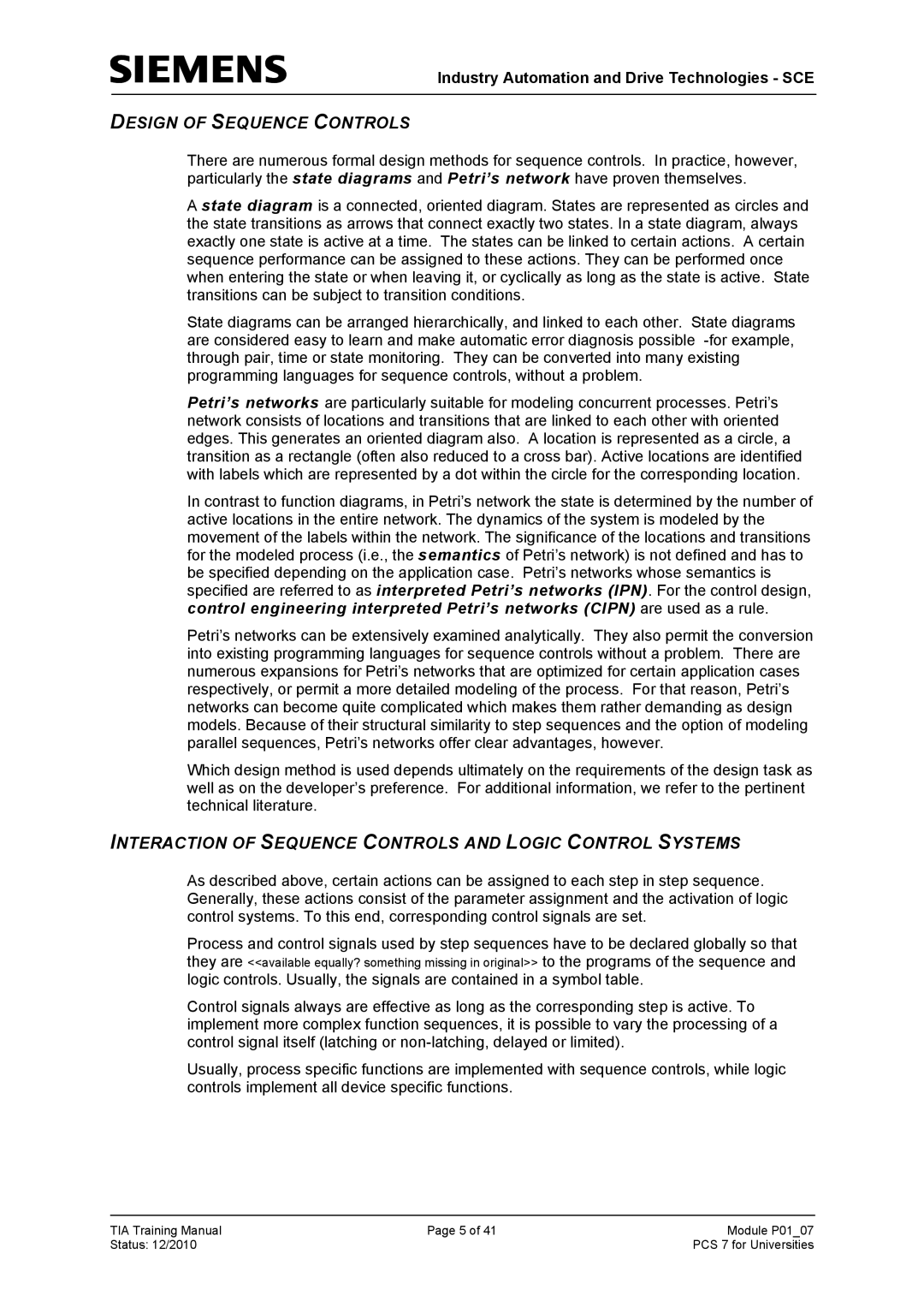
Industry Automation and Drive Technologies - SCE
DESIGN OF SEQUENCE CONTROLS
There are numerous formal design methods for sequence controls. In practice, however, particularly the state diagrams and Petri’s network have proven themselves.
A state diagram is a connected, oriented diagram. States are represented as circles and the state transitions as arrows that connect exactly two states. In a state diagram, always exactly one state is active at a time. The states can be linked to certain actions. A certain sequence performance can be assigned to these actions. They can be performed once when entering the state or when leaving it, or cyclically as long as the state is active. State transitions can be subject to transition conditions.
State diagrams can be arranged hierarchically, and linked to each other. State diagrams are considered easy to learn and make automatic error diagnosis possible
Petri’s networks are particularly suitable for modeling concurrent processes. Petri’s network consists of locations and transitions that are linked to each other with oriented edges. This generates an oriented diagram also. A location is represented as a circle, a transition as a rectangle (often also reduced to a cross bar). Active locations are identified with labels which are represented by a dot within the circle for the corresponding location.
In contrast to function diagrams, in Petri’s network the state is determined by the number of active locations in the entire network. The dynamics of the system is modeled by the movement of the labels within the network. The significance of the locations and transitions for the modeled process (i.e., the semantics of Petri’s network) is not defined and has to be specified depending on the application case. Petri’s networks whose semantics is specified are referred to as interpreted Petri’s networks (IPN). For the control design, control engineering interpreted Petri’s networks (CIPN) are used as a rule.
Petri’s networks can be extensively examined analytically. They also permit the conversion into existing programming languages for sequence controls without a problem. There are numerous expansions for Petri’s networks that are optimized for certain application cases respectively, or permit a more detailed modeling of the process. For that reason, Petri’s networks can become quite complicated which makes them rather demanding as design models. Because of their structural similarity to step sequences and the option of modeling parallel sequences, Petri’s networks offer clear advantages, however.
Which design method is used depends ultimately on the requirements of the design task as well as on the developer’s preference. For additional information, we refer to the pertinent technical literature.
INTERACTION OF SEQUENCE CONTROLS AND LOGIC CONTROL SYSTEMS
As described above, certain actions can be assigned to each step in step sequence. Generally, these actions consist of the parameter assignment and the activation of logic control systems. To this end, corresponding control signals are set.
Process and control signals used by step sequences have to be declared globally so that
they are <<available equally? something missing in original>> to the programs of the sequence and
logic controls. Usually, the signals are contained in a symbol table.
Control signals always are effective as long as the corresponding step is active. To implement more complex function sequences, it is possible to vary the processing of a control signal itself (latching or
Usually, process specific functions are implemented with sequence controls, while logic controls implement all device specific functions.
TIA Training Manual | Page 5 of 41 | Module P01_07 |
Status: 12/2010 |
| PCS 7 for Universities |
